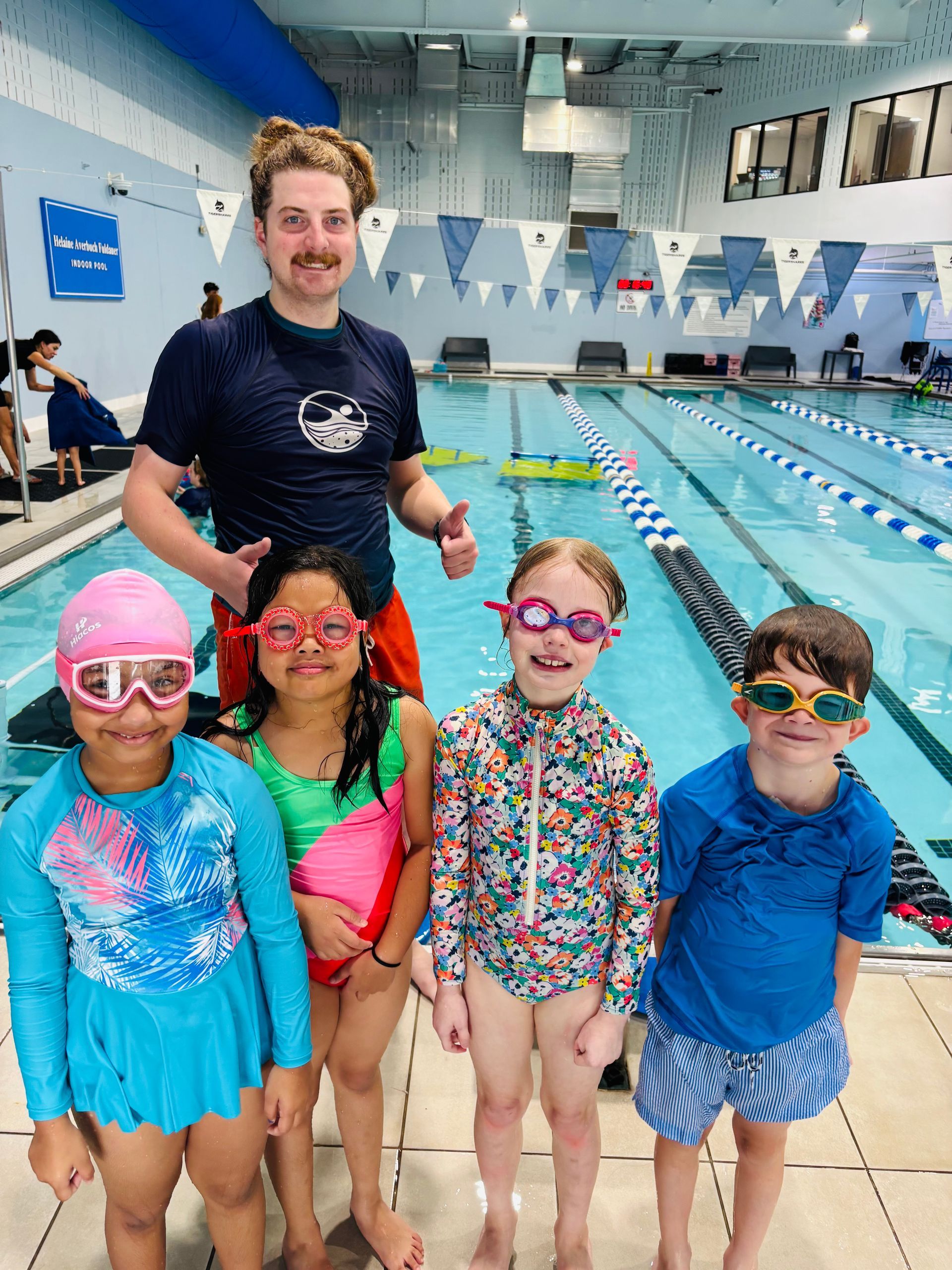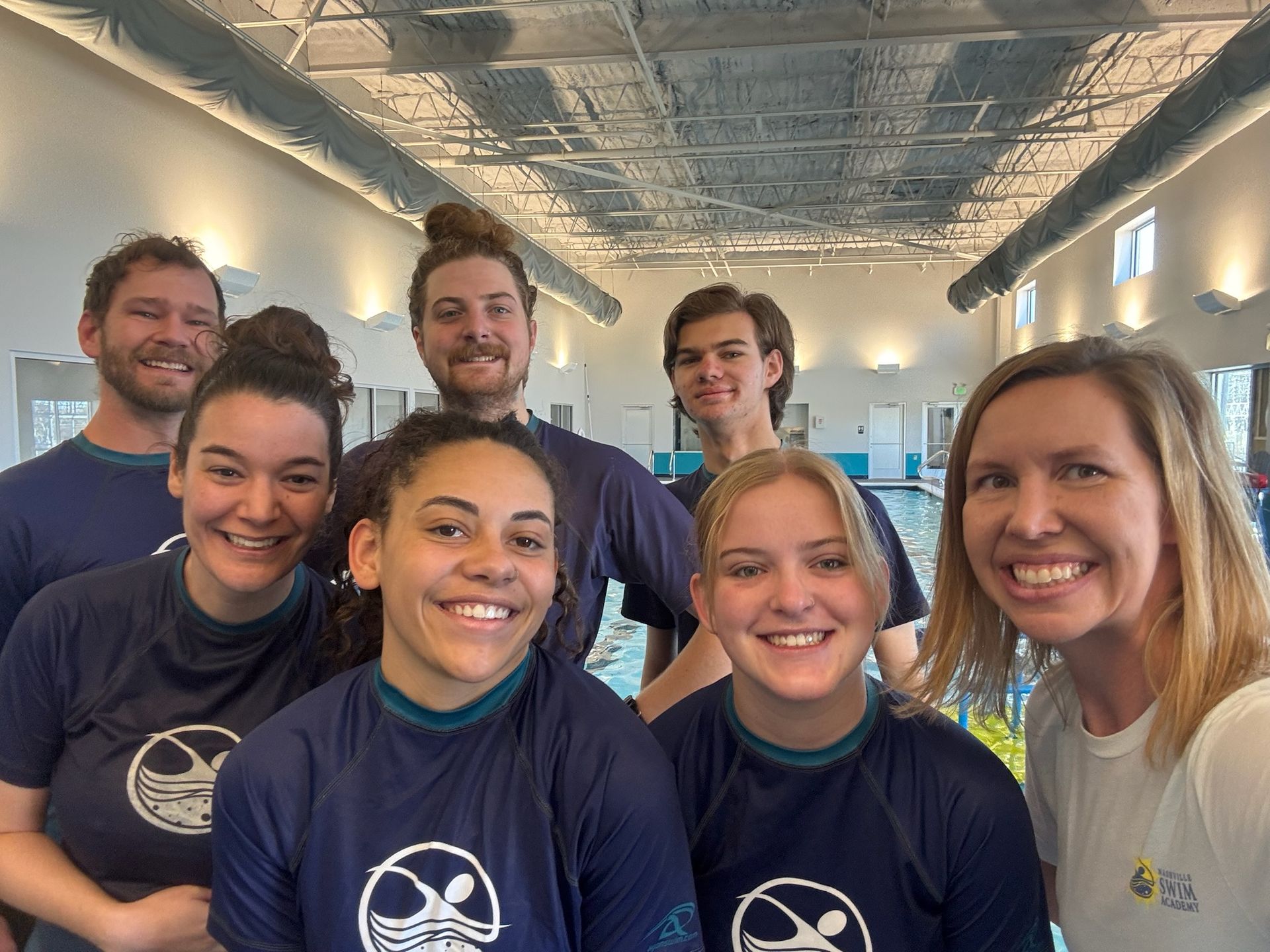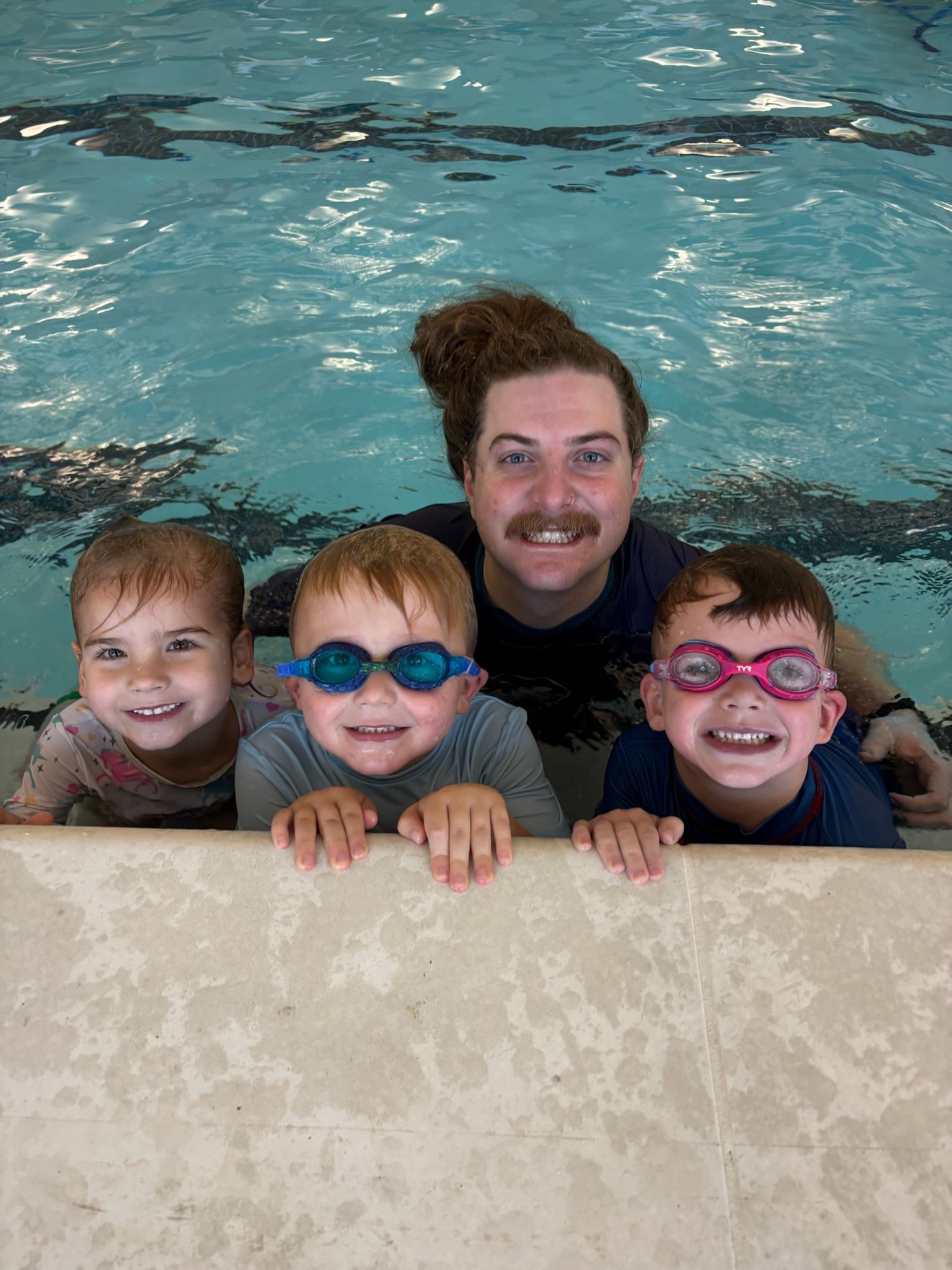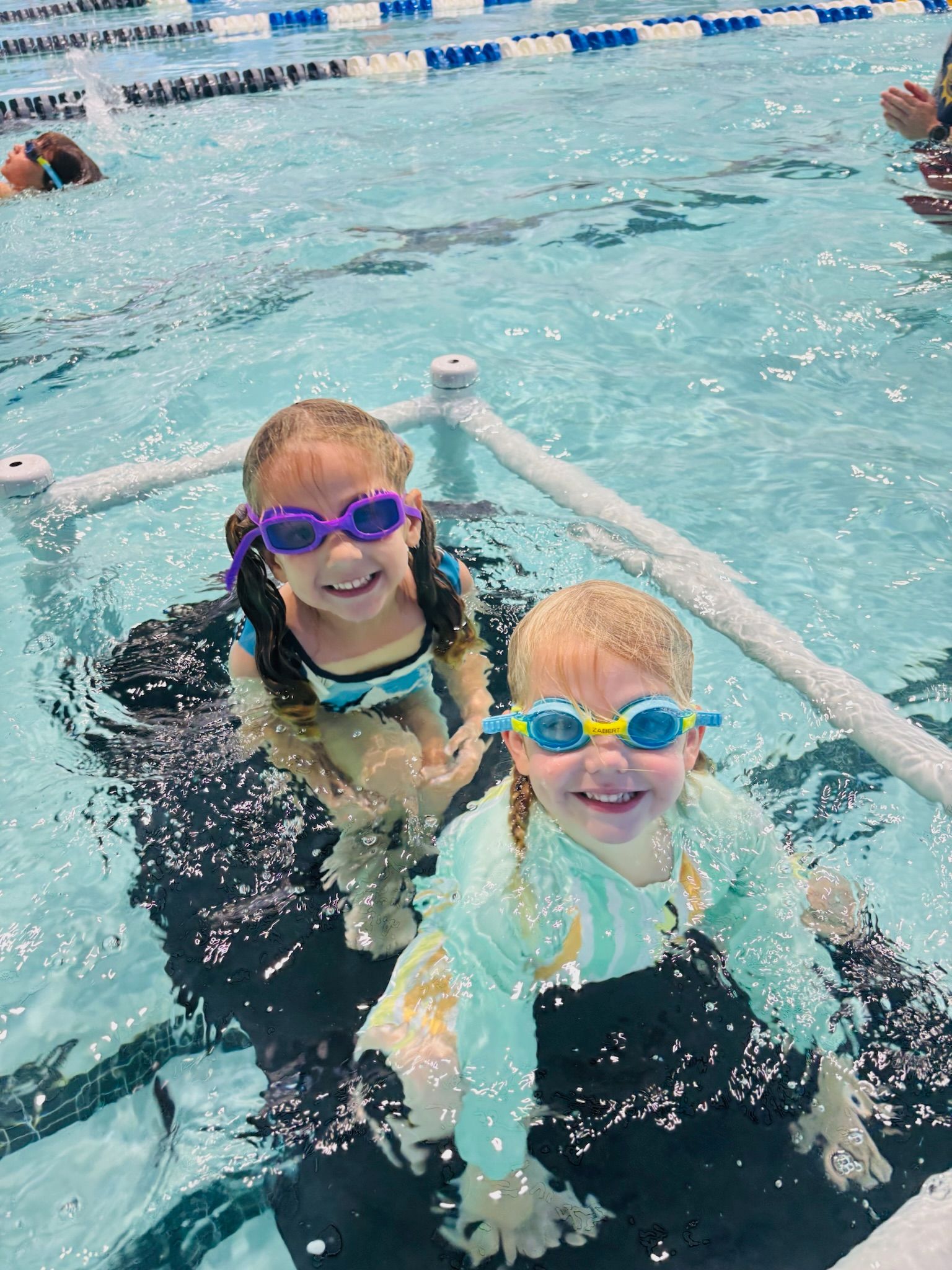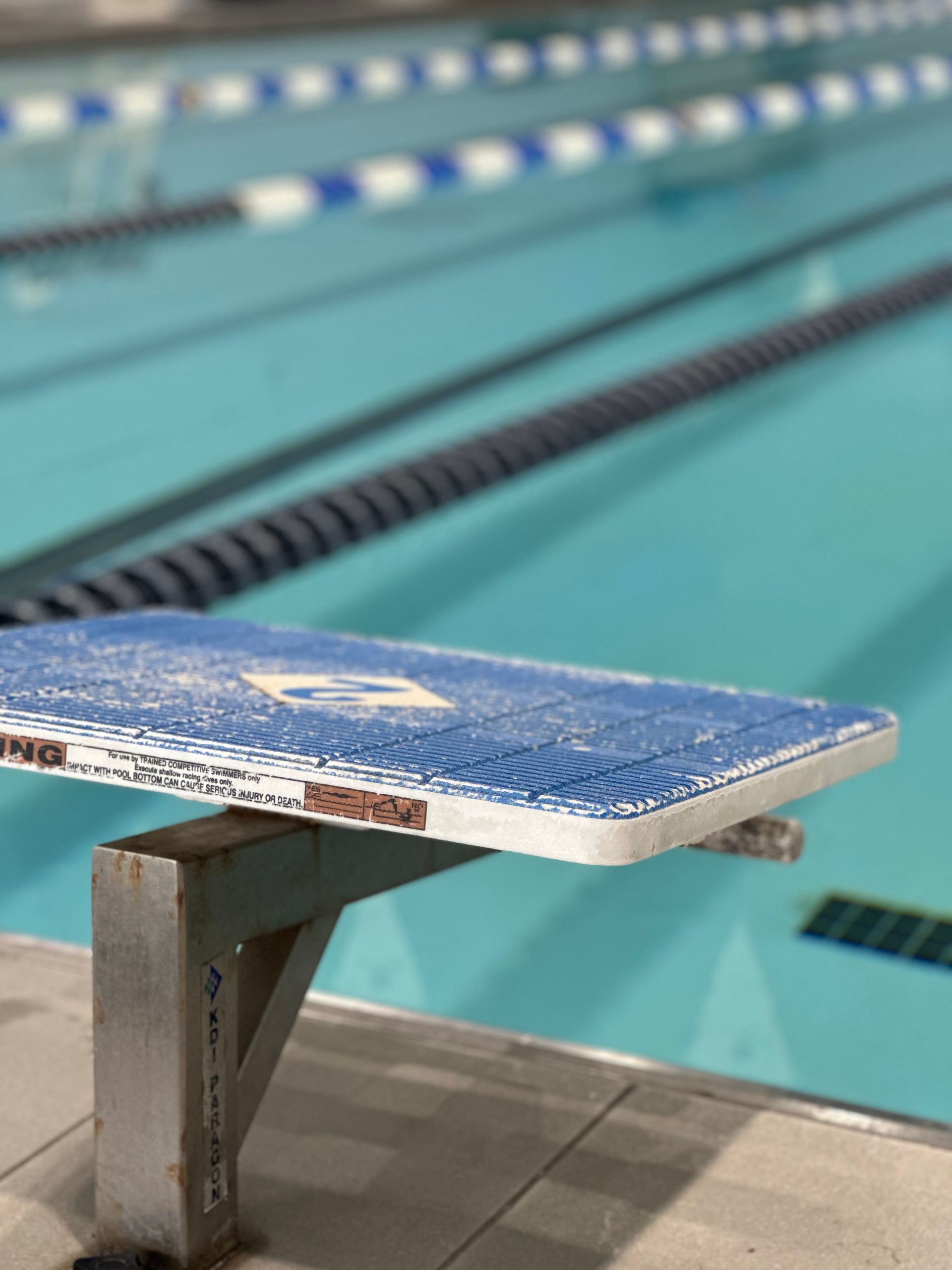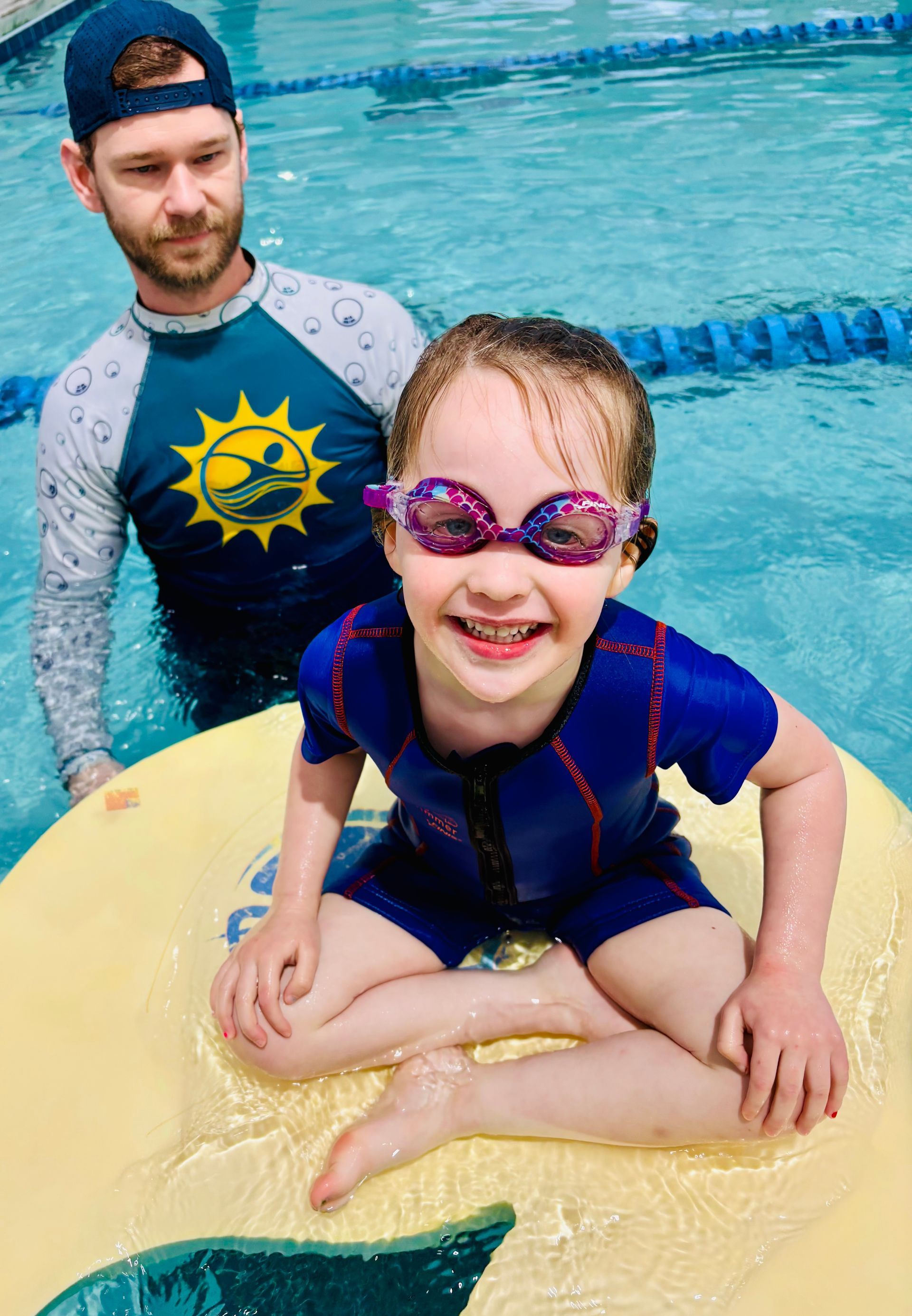Safety Talks
Safety Talks
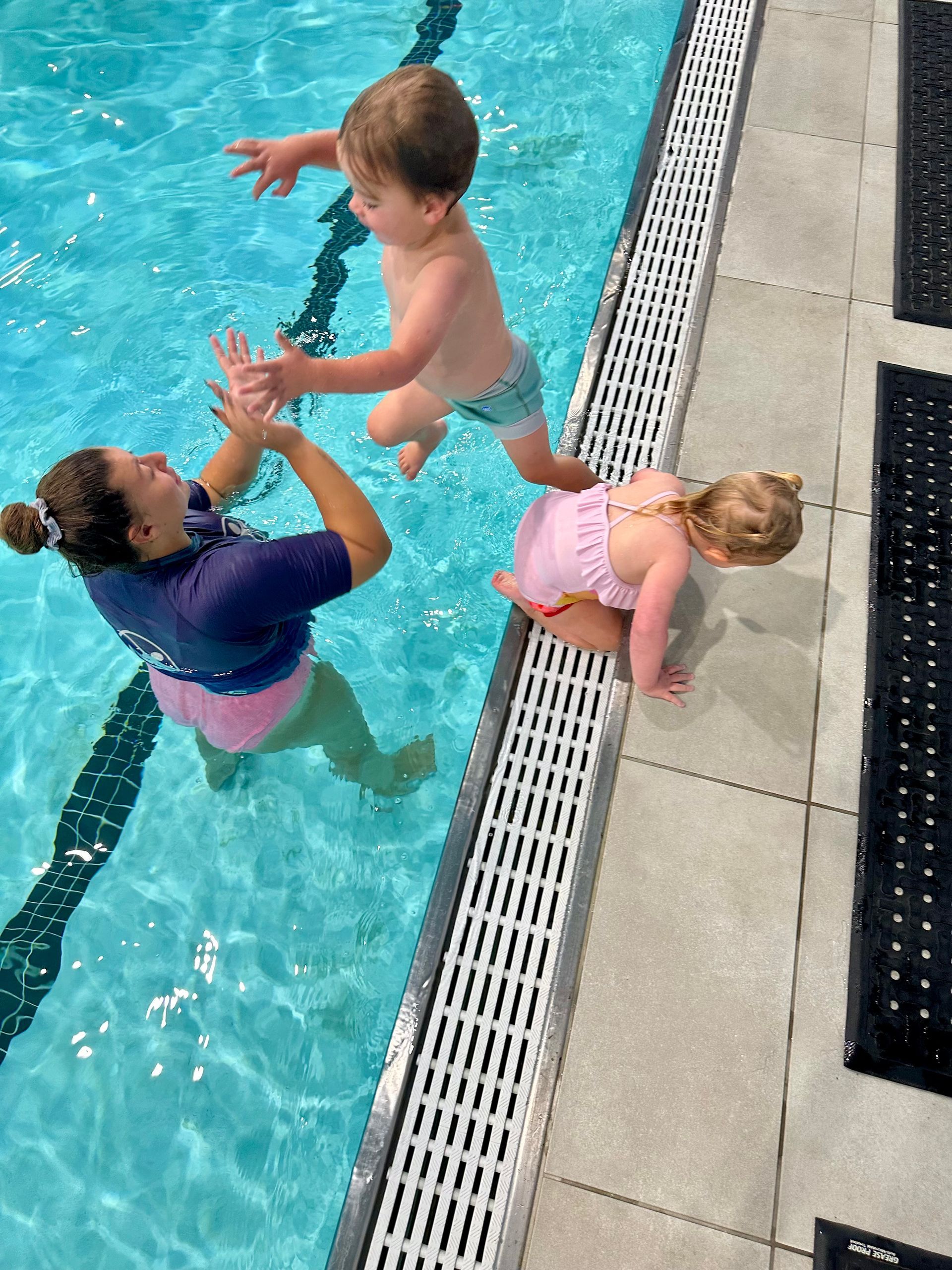
Believe it or not - swim safety starts at home! We suggest talking about being safe around water BEFORE you get to the pool. That way, no one is overly excited and everyone can focus on the conversation.
Some pointers for your swim safety discussions:
1). Have a script. Make the conversation the same every single time you are gearing up to go to the pool. Make sure every parent and caregiver highlight the same rules. Every. Single. Time! Your kiddos should know the “swim speech” by heart and should be repeating it back to you while rolling their eyes. 🙂
2). Set clear expectations and don’t falter. Just like with learning to cross the road or buckling into a carseat, your expectations and rules should be very clear. No exceptions!
3). Establish clear parameters for your child. Reiterate that we NEVER go in the water without a grownup.
4). Indicate one entry point of the pool. Stay in a certain area until a grownup gives you permission to get into the pool.
5). Communicate. If your child wears a flotation device, make sure to communicate when they are wearing the device and when they are not. A lot of tragic accidents occur because a child is used to the false sense of security given by their floatation device. They need to understand that they are not always wearing it!
6). Age group rules. Remind your younger swimmers that they cannot swim as well as their older siblings. Remind your older swimmers of the same thing. It’s important for both age groups to have a clear understanding of their ability in the water. Make clear rules against following older brother or sister into deep water.
7). NEVER leave older children in charge of younger children in or around water. The pool or lake is not a great place to practice babysitting. Water, and children, are unpredictable.
8). Be careful with your older kids holding their younger siblings in the pool. Most neighborhood and backyard pools change depth and a cute situation can become a dangerous one very quickly.
Here are some talking points for your older swimmers!
1). Confident 7+ Year Old Swimmers: We need a buddy when we swim. We never swim alone. All swimmers should have a buddy with them before they take the plunge.
2). Confident 4-6 Year Old Swimmers: We need grown-up's eyes watching us when we swim. Before we jump in, we need to check to make sure our caregiver is watching. We never go in the water without our grown-up's eyes watching us.
3). Walking Feet Around Water: We always use walking feet around water because with water comes slippery surfaces. Be mindful that you may have amazing balance and quick reflexes but those around you may not and slipping and sliding will happen if you run.
4). Always Keep Hands, Feet, & Flippers to Yourself: Have a blast splashing and playing in the water, but keep your extremities to yourself. We don't want a playful wrestle, push, or pull to cause an accident.
5). Look Before you Jump: We always check to make sure we are jumping out into open, clear water, avoiding other people, objects, and murky water.
6). How do we know it is safe to dive in? The first step is to look for signage: We all know what the no diving sign looks like. Obviously, we know not to dive if we see that sign, but what if there isn't a sign and no indication of how deep the water is? In these cases, we test the depth with our feet first. If the water is over your head, it is safe enough to dive in. If you do see depth indicators, you are looking for the water to be at least 5 feet deep before you dive.
7). What to Do if someone is struggling in the water: Unless you took a lifeguard class when no one was looking, you never jump in after a friend or sibling who is struggling. Get a grown up right away so they can help.
8). Life Jackets on When in a Boat: Everyone needs a lifejacket when we are in any sort of water craft.
9). The Only Thing In our Mouths While Swimming Should be a Bubble: We avoid swimming with gum, hard candy, or really any kind of food while we are swimming. All these things are a choking hazard while swimming.
10). Younger Siblings Are Watching and Following: Remember that younger siblings need a grownup supervising them at all times around water. If the younger sibling follows your older child(ren) to the deep end, tell your older kids to send them back to the grownup and make sure the grownup gives the okay for them to venture into different areas of the pool.
PARENTS - remember!
1). Come up With a Plan Before Swimming - Talk to your swimmers ahead of time about expectations. Give the okay before allowing kids to swim. Make sure you have clear parameters set before you let your older kids loose. Have clear and regular check-ins with your older swimmers to give them a rest period to keep them energized while in the water.
Share Article
